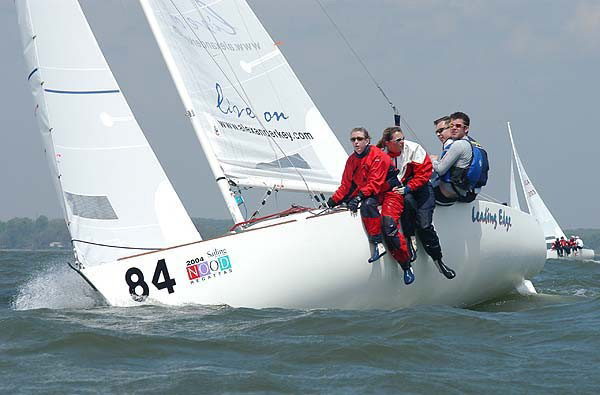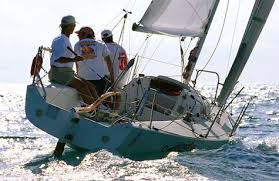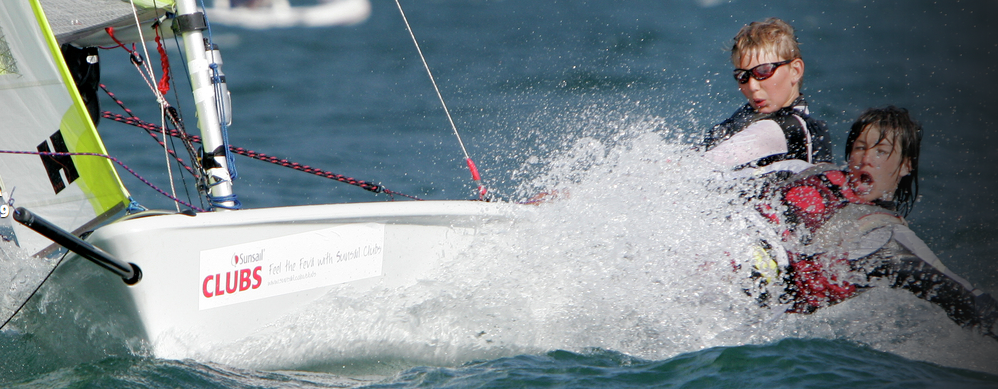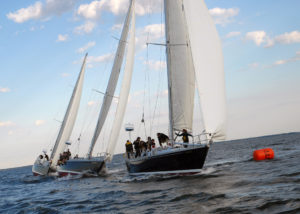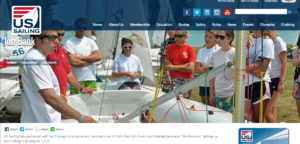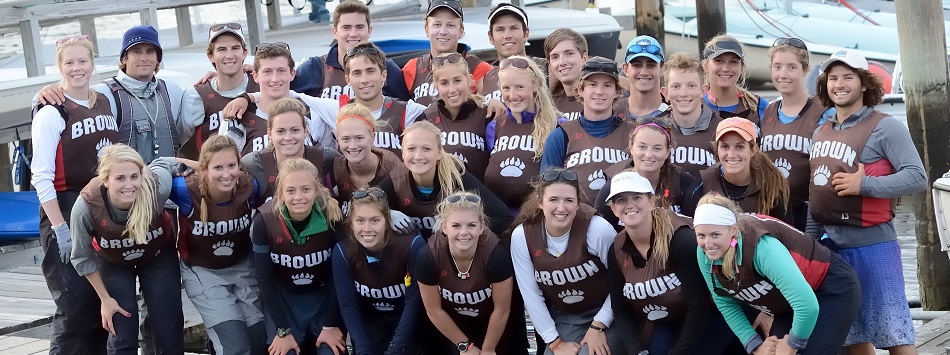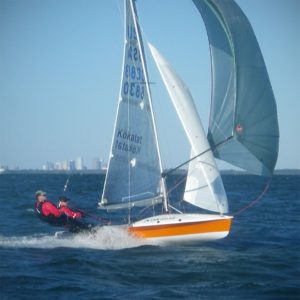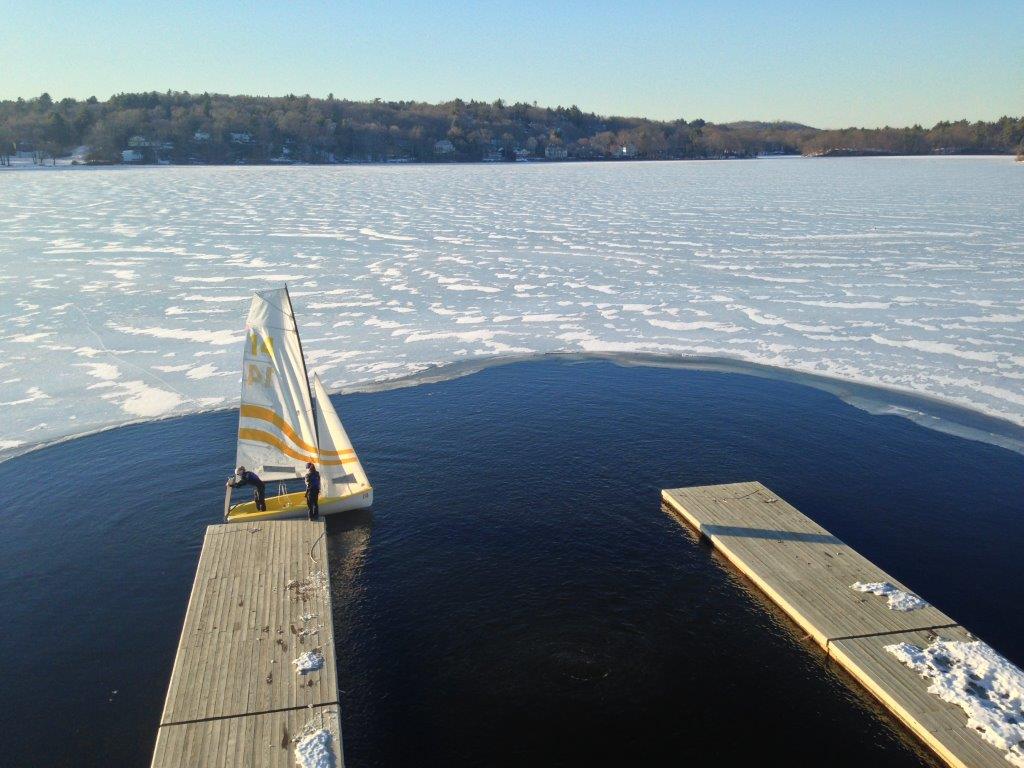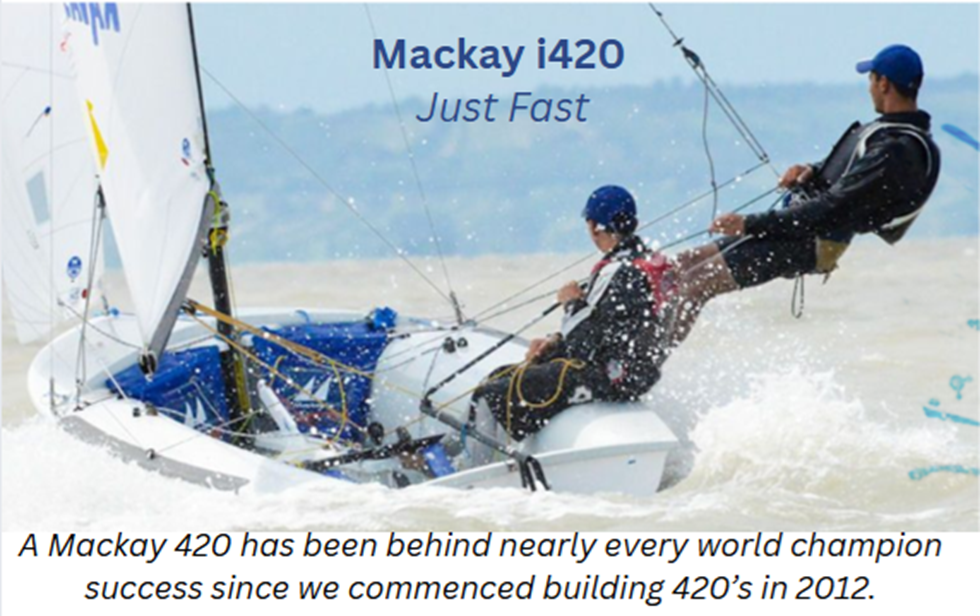Dallas, TX, March. 2, -Layline re-invents itself and, launches a new online platform to provide a better service to all one design and, performance oriented sailors.
The changes may not be visible to customers but, it changes the way the store runs, how it displays products and, other tools aimed to enhance the visitor experience. The new management has worked to re-build what and how Layline delivers, while staying true to what the original founder first envisioned, when he created this company.
Recently acquired by a large sailing group, Layline’s new management and marketing team are committed to bringing the brand back to its old glory and, become once again the place where dinghy sailors, beach cat aficionados and, racers find the right parts for their sailboats and, best sailing gear for each wind and, water condition.
An experienced group of sailors will be leading the technical support area and, they are eager to talk with you about your racing program or any sailing needs you may have.
Visit: www.layline.com
About Layline
Founded in Oct. 1986 by Walt Brown, Layline rapidly became the premier sailing store in the USA. It was known for their printed catalogs, full of one design specific products and, selection guides.
As times evolved and with the upraise of the internet , ownership changed hands a couple of times until recently. Layline assets were purchased by a large online marketing and, sailing company. The new ownership has over 14 years of experience with e-marketing and, are a team of lifetime sailors.
Today www.layline.com features a leading edge e-store and has been re-packed full of sailing knowledge, in addition to a second to none order processing department.
Stay tuned for new sponsorship and, strong presence by the Layline sailing and e-commerce team.
J/80 vs J/22: Which is Right For You?
The Johnstones have been a fixture in the sailing industry ever since the first J/24 came out of Rod’s garage in 1977. Since then, J-Boats has produced boats of every imaginable length and price point. While the venerable J/24 is the signature product of the company, two other boats in the mid-20’ range have risen to prominence as well, the J/22 and the J/80.
The Boats:
An international class, the J/22 has over 1600 hulls racing on three continents. It is widely regarded as one of the most successful one-design keelboats in the world. The J/22 is 22.5 feet long, 8 feet wide, draws nearly 4’ and weighs around 1800lbs. Sail plan is main, non-overlapping jib and large symmetrical spinnaker. Trailerable behind an SUV, the J/22 is easily rigged and launched at the local hoist. It sports a deck-stepped mast, laminate cored construction and lead ballasted fixed keel.
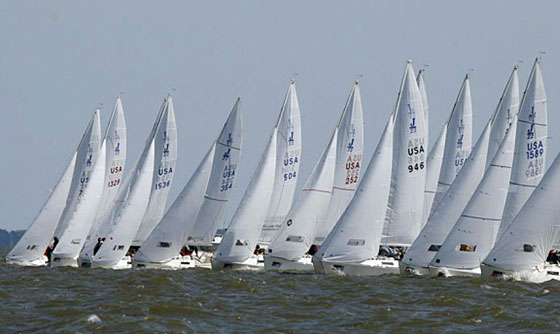
Designed in 1992, the J/80 is one of the best selling small keelboats in Europe and North America. There have been over 1300 J/80s produced and it is recognized as an international class by ISAF. The J/80 has a reputation for being a fast, safe boat with exceptional offshore capabilities. It comfortably planes in 15 knots of breeze and has the size to punch through big chop.
The J/80 is 26 feet long with a 8’3” beam, 4’11” draft and weighs 2900lbs. It sails with a main, non-overlapping headsail and asymmetrical spinnaker. It has a large clean cockpit, enclosed cabin with 4 bunks, and a fully retractable bowsprit.
Set up and Sailing:
The J/22 is a quick boat for its size and handles well upwind in most conditions. Rig adjustment plays a big part in the performance of the boat in racing situations. The two big adjustments are shroud tension and mast rake. Uppers are adjusted from the turnbuckle at the chain plate, making sure to also adjust the lowers accordingly. Mast rake is measured from the length of the forestay. A great tuning guide can be found from North Sails here (https://sail1design.com/wp-content/uploads/2015/03/north-j22-tuningguide.pdf).
Upwind the boat drives off the main; the 100% jib helps the boat point. Because it has a large, high aspect main, it is easy to depower in medium heavy breeze. Using the vang and mainsheet, it is easy to flatten the main and dump power. Crew placement is also important due to the relatively light hull weight. Using weight to keep the boat flat, as well as moving weight aft in chop helps drive through waves. Downwind the spinnaker should be full, continuously adjusted from both tack and clew. Pole height affects the spinnaker shape greatly and should be monitored.
J/80 mast rake is the most important tuning aspect for performance. Information on the best way to tune your J/80 can be found from North Sails right here (https://sail1design.com/wp-content/uploads/2015/03/north-j80-tuningguide-N01.pdf). Adjusting your intermediates and lowers will help mast sag and power upwind.
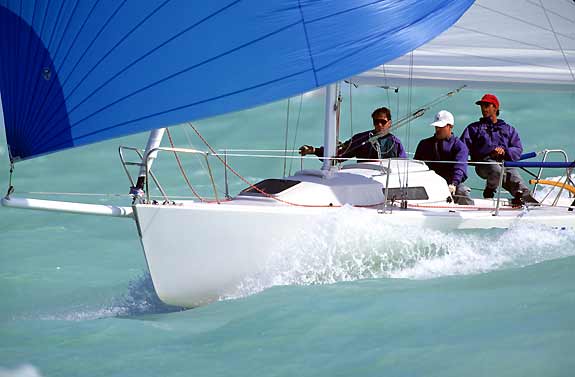
Which is right for me?
Both boats serve different purposes. The J/22 is an effective club racer for protected areas in medium air. It is regarded as very good racer and has served as principle match race championship boats. Appealing to a wide range of ages and ability levels, the J/22 is a very good day sailor.
The J/80 is an excellent buoy racer by any accounts. The ability to handle a very wide range of conditions allows the boat to excel in more locations than the J/22. Additionally, the J/80 performs well under handicap and can be easily sailed shorthanded. It is a stable platform without sacrificing performance and can even be overnighted. The J/80 is an exciting racer that can be enjoyed on an evening day sail with friends.
RS Feva
The most modern and unique small sailboat in the world. Young or old – simply great sailing. Amazing value and fun for adults and youth. World leading double-hander with a huge race circuit and recreational following across the globe – an International best seller!
The worlds best selling two-person sailboat in recent years, an ISAF International Class, winner of Dinghy of the Year in the USA, Coup de Coeurs in France, an RYA Recognised Junior class…the list of honours goes on and on. The RS Feva is the benchmark in small sailboats.
The best boat for youth racing post-Opti
One of the largest and fastest growing fleets in the World!
World leading double handed race boat – with cockpit space to allow young sailors or adults to love it.
The Feva XL is an International Class, selected by the International Sailing Federation (ISAF). There are fleets growing fast all around the globe, with training and club racing right up to World Championship competition.
“Lots of usage, great durability, terrific fun, major adrenalin rushes, good friends, brilliant value for money – What more could a family want?”
Bill Tucker – Feva Dad
Learn more: http://www.rssailing.com/us/explore/us-rs-feva
Fun for all – Young or old
- Big cockpit and high boom make the Feva really comfortable for youngsters and adults.
Single handed or crewed
- The Feva is the perfect size and has rig options that allow easy handling by one sailor, family crews or friends.
- High volume hull means it’s manageable for heavier crew
Novice to racer
- Combines stability with performance
- Confidence inspiring and very easy to sail…
- RS Feva is also the fastest of her type
- Full Class racing and training programmes
- Worldwide ISAF International Class
Short Handed Sailing Practice Sessions
By Andrew Kerr
The seemingly increasing demands of modern life on competitor’s time can make practice sessions very difficult to schedule with a full team – inevitably someone’s schedule does not work with the desired date.
For example: a team has a regatta at the club 7 days away on the schedule and a fully crewed practice session prior to the racing would be the best case scenario. Two of the team members can’t make it, and another has time constraints and can’t practice the full time, so what to do?
With this reality in mind, as a coach with a lot of different teams and fleets, I fully recognize the challenges that teams face regarding practice time and I have used a series of shorthanded drills that can maximize the benefits of the session while sailing shorthanded and with time limitations.
Here are three drills a team can do with a skeleton crew to get the most out of the time (there are many other drills a team can do depending on time and the number of crew available, we will look at these other drills in later articles):
These drills are at the corners of the course: 1) the start, 2) the windward mark rounding and 3) the leeward mark rounding, all areas where the team wants to be strong and ever improving and where there are big gains and losses to be had on the race course.
Each practice should be with one or two specific targeted goals in mind, the drills below are typically critical elements of a race that can be practiced shorthanded.
- For the start: Time and distance drill – goal is to be at full speed crossing the line at the buoy at the starting signal:
Pick a mark and sail away from it for 1 minute, estimate how long it is going to take to get back to the mark also including a tack, then tack when you feel it is the right time, sheet in and go and see how you do. Are you late, early, or just right passing the buoy at full speed right on the start? Particularly after a long winter break from sailing or with simply not many starting opportunities this is a skill to constantly polish and refine.
Very often teams are either late to the start or have set up too early and use the line up as a vehicle for burning off excessive time. Both result in poor starts and need to be eliminated as variables. Practice as many of these starts as you can. The result is instant feedback for evaluation and ease of set up with only one mark needed.
Dave Perry’s time and distance chart from his “understanding the Racing rules of Sailing” book is an outstanding tool I refer to all the time. Some key highlights: a) At 5 Knots of boat speed a boat will do 8.44 feet per second, therefore a 24 foot boat will take approximately 2.5 to 3 seconds to go one boat length, b) At 6 knots of boat speed a boat will travel 10 feet per second, so a 40 foot boat will take approximately 4 seconds to travel one boat length.
With this in mind as the team practices time and distance, a designated crew member (usually the tactician or a trimmer), can start to verbalize time from the line (including a tack) which can greatly help the team with orientation to the line and prevent either being too early or too late – an example would be “40 seconds to the line including a tack “.
The key element to emphasize on the final approach is slowing down early in the sequence rather than later. In coaching I have noticed that the more confidence a team has practicing this, the better their starts.
During this drill take every opportunity to practice and gauge lay line approaches to the mark.
Judging lay lines is an ongoing skill development because of the nature of our sport: different boats, different wind, sea, and current conditions.
Every approach to the mark can be an opportunity to pick a good lay line so that the team is not barging and thus not being dictated to by a leeward boat or unable to fetch the pin end of the starting line.
With the above drill, I have seen teams progressively make their starts more consistent. Instead of one good start followed by a bad one, the team has a series of good starts that enable them to play the tactical chess game in clear air and enact their game plan.
- Bonus practice – Round you’re practice starting mark like a windward mark with the Goal of doing it smoothly with minimum speed loss and best tactical positioning.
Take an opportunity to round the mark focusing on aiming half a length wide of the buoy and smoothly bearing away to appropriate angle for the velocity as well as fluidly easing out the mainsail.
In the team self-evaluation – how much speed did we lose?
If the rounding was done in good velocity did we end up too high out of the rounding and thus give up the inside to other boats?
If rounding in light air did we end up sailing too low and losing all of our momentum?
How did we judge the lay line to tack to the mark? Did we over stand? Was it too tight?
It is very noticeable when watching races from a coach boat how the top skippers round the marks smoothly with elongated smooth turns that maintain momentum and positioning while other teams round with an abrupt speed killing turns. Make it a goal to be the former team and not the latter!
- Leeward Mark rounding Drill:
Goal: Work on approach so that the team comes out of the mark rounding at top speed and as close to the mark on the back side of it as possible.
This is a really good one to do with no spinnaker for both repetition and evaluation after each rounding.
Did we come out of the rounding with speed? Try different approaches – both port and starboard rounding’s over and over again – coming in on starboard and having to jibe as an integral part of the rounding and working on making sure the mechanics of trimming in the mainsail fluidly and trimming the headsail in perfectly to the tell tales for all points of sail for max speed .
Coming in on port tack with either the ideal 1 and half lengths wide of the buoy – or “tactical rounding” approach or coming in for a “speed rounding” where the team is constrained by an outside boat and is simply owed mark room.
Team Evaluation:
In the evaluation process after each rounding the team can ask several questions – are we over trimming the headsail in relationship to the rate of turn and points of sail?
Are we pinching too much out of the rounding and losing speed? Are we right on the wind on the exit out of the mark? Were we tight on the backside of the mark on the exit of the rounding or did we concede distance to leeward?
A common error to watch for is often in light air the Mainsail is trimmed in too quickly for the rate of turn and the boat loses a lot of speed – watch for this one, the same can be observed for the headsail being brought in too quickly and pushing the bow away from the mark. Lot’s to be gleaned from this drill – boat handling, sail trim and spatial evaluation as well as review of the applicable rules.
Shorthanded? Not much time available? Your team is still set to practice and get the maximum out of it!
Sail1Design & US Sailing Form Partnership
Annapolis, MD – Sail1Design is pleased to be named the official job board/career center supplier, and Marketplace supplier, for US Sailing. We offer sailing’s #1 Career Center and Job Board, always chock full of incredible sailing job opportunities, from summer coaching positions to full-time, professional opportunities. Our comprehensive career center also offers job seekers the ability to create their own resume and web page, highlighting their experience and posting their resume. Likewise, employers can search our resume database to find the right match for that open position. Sail1Design is proud also to be the official job board of the Intercollegiate Sailing Association (ICSA), the US High School Sailing Association (ISSA), and now, US Sailing. US Sailing members will receive a discount on Career Center and Marketplace posts.
Unique to the industry, Sail1Design hosts and manages an active private, by-owner Marketplace, focusing on performance and one-design sailboats & gear. For all boats under 25′, our ads are free. What makes us different is that we also provide, side-by-side, professional brokerage services as well. We have had great success helping our sailing clients market and sell their boats, using our powerful client base, social media, and the brokerage industries multiple listing service to ensure your boat gets noticed.
more About Sail1Design
About US Sailing
US Sailing was originally organized as the North American Yacht Racing Union (NAYRU) on October 30, 1897. As the National Governing Body for the sport of sailing, US Sailing’s mission is to provide leadership for the sport of sailing in the United States. The organization works to achieve this mission through a wide range of programs and events, geared towards providing an equal level playing field for all sailors. US Sailing sets the course enabling sailors to enjoy the sport for a lifetime.
For first-time sailors, US Sailing ensures that they will learn from experienced and certified instructors who follow national guidelines and are trained using a nationwide curriculum. For sailing programs and one-design sailing organizations, US Sailing hosts networking events and symposiums that bring together experts who address the latest developments in these areas of the sport. Young sailors who are just starting out in the sport can learn about sailboat racing through one of many Junior Olympic sailing festivals organized by US Sailing every year.
For racing sailors, US Sailing provides an equal level playing field by training and certifying race officials, judges, and umpires and by ensuring standardized rules and sailing instructions. For sailboat owners who enjoy competing in offshore events, US Sailing provides rating certificates such as IRC and ORR to enable boats of various sizes to compete against each other. Safety on the water is an essential part of US Sailing’s training programs, including powerboat courses. US Sailing’s Safety at Sea Seminar is a course required by many offshore regatta organizers.
We host 16 National Championships at sailing organizations around the country. These championships offer various disciplines of racing so sailors can test their skill level at a national level. For sailors aiming to represent the USA at the Olympic and Paralympic Games, US Sailing trains, selects, and manages these great athletes.
US Sailing could not achieve its mission without the ongoing support of its members and volunteers. Our members have a shared passion for this lifelong sport.
– See more at: http://www.ussailing.org/about-us/#sthash.LPb8ednS.dpuf
What Great Sailing Coaches Do
All good coaches, regardless of their chosen sport, share some important fundamental qualities that transcend technical knowledge, or specific x’s & o’s. In other words, whether it’s a basketball, tennis, hockey, football, chess, or sailing coach, there are certain key characteristics to good coaching, and none of these really requires technical knowledge of the sport they are in.
See our Profiles in Pro Sailing: John Mollicone
Here are some of those characteristics: logistics, organization, energy, leadership, passion, creativity, patience, dedication, motivational skill, humility.
I would bet that you could take a good coach, put him or her in a new sport, and that coach would find some success. Think about the best coach you ever had, and visualize that person in another sport, and you might see just how that person could adapt and still be a difference-maker.
However, we all know that great coaches not only possess these core qualities, but indeed they are also masters of the subtleties, rules, and technical chess moves of the sport they are involved in. Very often, great coaches are former players themselves, and often they are good, but not necessarily great players. In any event, it seems virtually certain that actually having been in the arena at some level, having been a true game player, is a necessary ingredient for a great coach.
So then, what an important advantage sailing coaches have, since the sport allows lifelong top-level competitive opportunities. While it would be impossible for a middle-aged football coach to live, first-hand, what his players go through on the gridiron, middle-aged sailors and coaches can stay current, and can compete right alongside the world’s best sailors, and even win world championships in sailing. Opportunities exist in team racing, match racing, and all types of one-design classes offer regattas, year-round. In this manner, sailing coaches have the ability to get inside the sport, at the highest levels, learn more, and feel the same things that their players go through out on the race course. The empathy gained here is a very powerful tool that great coaches employ when coaching.
Getting into the rhythm of a sailboat race, realizing first-hand the excitement and frustrations of the sport, preparing mentally for each race, “knowing when to tack”, these are all things that coaches must be able to talk to their players about, and talking to them about these things is so much more clear and present when done by someone who is actually good at them, and has done them recently at a high level.
For example, it was always easy for me to say to a team, “make sure when you are in FJ’s at the starting line to allow yourself more leeward room to accelerate since the foils are small and the boats need to go bow down first before they start lifting.” It was really easy to say. It was quite another thing to actually do it, and to go out on the starting line, in FJ’s, and practice what I preached. That was a LOT harder, and I drew a great deal of empathy with my players from that situation and recognized better ways to talk about it and to talk them through it, having been there myself. This is especially true in team racing, where coaches can see plays easily on the coach boat or on the drawing board, but it’s one thing to talk about a mark trap at Mark 1; it’s another thing altogether to go out and be able to execute it. Without being, or having been, in the arena, sailing advice and technical coaching can be somewhat hollow compared to other sailing coaches who know it first-hand and live what they coach.
So, when you look to your coaches for advice or to get to that next level, or if you are a interested in sailing in a college program, take a moment and check out the coaches resumes, just as they will most assuredly be checking yours. The list that makes coaches good coaches should be there for sure, but see if the coaches list how, or if, they stay current in their profession and have the passion to go out on the racecourse themselves. Great coaches usually always have a story, and very recent one, of a lesson learned at a regatta they sailed in themselves. They love to sail and get better, if only to become a better sailor and coach.
While there is a short list of coaches who choose to (and can) do it all, many top collegiate programs now share these coaching qualities by hiring an assistant or co-head coach, who is very often a recent college sailing alumnus and is active in dinghy racing and brings that empathy, right away, to the team. The head coach then ties everything together with experience, maturity, management, and knowledge of the game.
If you’ve ever noticed, baseball coaches actually suit up for games even though they certainly won’t be playing. This historically comes from the old “player-coach” model, and perhaps, this connects them with the game and the player more intimately. Sailing offers the unique ability for all ages to compete at the highest levels of the sport, and great sailing coaches take advantage of this, “suiting up” themselves and making themselves better at coaching by sailing competitively.
Profiles in Pro Sailing: John Mollicone

Editor’s note: John Mollicone is a classic example of a coach who also “practices what he preaches.” We believe strongly in the model of a coach who keeps up with professional development by actually being out in the game himself. See our old post “What Great Sailing Coaches Do.”
To any current or former college sailor, the name John Mollicone is immediately recognizable. Head coach at Brown University, J-24 champion and dedicated ambassador of the sport, Mollicone has been a fixture in college sailing for a decade and a half. Whether it’s in the classroom or on the helm, Mollicone has made his living on the water since he left school.
It was in the college sailing mecca of New England that Mollicone rose to prominence. An All-American Boston University sailor, Mollicone cut his teeth on the icy waters of the Charles River and led the team his senior year to a New England Dinghy Championship and an impressive third at Nationals. This performance landed him a job at Brown University as the head coach. (To get some perspective on coaching in college, see John Storcks article “A Life in one Day: Coaching in College“)
“I was lucky to be offered the position at Brown University as the Head Sailing Coach right out of college. I always enjoyed coaching and I really enjoyed my college sailing experience so I was lucky the position was available.” Said Mollicone. Faced with the challenge of rebuilding the program from the bottom up, Mollicone wasn’t sure at first if the shoe fit. “At first I wasn’t 100% sure. I figured I’d give it a year or two and see if things progressed at Brown and how much I liked the lifestyle and hours. After a few years of a one-year at a time approach, I decided I really loved college coaching, working at Brown, and interacting with the Brown student-athletes more than I ever imagined.”
His first year was tough. “When I started coaching at Brown in 1999 we were in a rebuilding stage from the depth of the team to moving to a new home site. It was a challenge to get the program competitive again by increasing the amount of sailors on the team and the depth of talent.” Pulling together and gaining financial support to supplement the talent, the Brown team quickly climbed the college sailing rankings to the top spot in both Women’s and Coed.
In addition to the ability to work with some of the top student-athletes in the country, Mollicone also enjoys the flexible nature of coaching. He is a self-described “part-time professional sailor” and routinely dominates local J-24 racing. No weekend warrior, Mollicone has won numerous World, North American and National J-24 Championships. In 2011 he was a member of the silver medal US Olympic team at the Pan-American games in the J-24 and was a US Sailing Rolex Yachtsman of the Year nominee in 2012. He has recently forayed into the world of J-70s, winning Midwinters in 2013 and 2014, North Americans in 2014 and a third at Worlds in 2014.
During the college sailing season (Sept 1-mid November and mid February-early June), Mollicone is swamped, “During the college sailing season…there are not enough hours in the day, it’s certainly not a 9 to 5 job.” A program the magnitude of Brown’s requires constant attention. “Mornings and early afternoons during the week are consumed with meetings, recruiting, phone calls, emails, regatta planning, practice planning, and boat work.” He excels in this three-ring circus and has lead Brown to 48 National Championship appearances 21 top 5 National Championships, 12 New England Championships and six Atlantic Coast Championships. Student-athlete development has also been strong, producing 54 All-Americans, 17 Academic All-Americans and 87 All-New England Sailors.
Dedication and hard work drive the Brown University team with Mollicone at the helm. His position with the team was a combination of luck and ability, “I was very lucky to get a college head coaching position right out of college. I had a successful last year of college sailing, was from Rhode Island, and the Brown job was probably not to appealing to anyone with lots of experience since it was more of a club team on a tight budget.”
He is quick to point out the difficulties of getting into the college coaching game, “Nowadays, becoming a head coach of a good program takes some experience and there are many great opportunities available to become an assistant coach at a strong program or a head coach of a smaller program if you are younger or need some much needed experience.” Mollicone admits that modern coaching requires a wide variety of skills, “The sailing and coaching background are only a small part of the job description. You have to be able to fund-raise, budget, recruit, and be a really good organizer and administrator.”
Whether it was his experience in the biting New England winters, or a trial by fire approach to his first (and only) college coaching position, John Mollicone has a multitude of successes. Mollicone’s biggest piece of advice for an up and coming or aspiring coach? “Be ready to put a lot of hours in if you want to be successful!”
About Sail1Design
SAILING/MARINE INDUSTRY CAREER CENTER & JOB BOARD
We offer sailing’s #1 Career Center and Job Board, always chock full of incredible sailing job opportunities. Our comprehensive career center also offers job seekers the ability to create their own web page, highlighting their experience and posting their resume. Likewise, employers can search our resume database to find the right match for that open position. Sail1Design is proud also to be the official job board of the Intercollegiate Sailing Association (ICSA), and the US High School Sailing Association (ISSA).
MARKETPLACE & PROFESSIONAL BROKERAGE
Unique to the industry, Sail1Design hosts and manages an active private, by-owner marketplace, focusing on performance and one-design sailboats & gear. For all boats under 25′, our ads are free. What makes us different is that we also provide, side-by-side, professional brokerage services as well. We have had great success helping our sailing clients market and sell their boats, using our powerful client base, social media, and the brokerage industries multiple listing service to ensure your boat gets noticed.
AIRWAVES NEWS & CALENDAR
S1D also hosts Airwaves, an interactive, user fed Sailing Calendar and informative Sailing News, Articles, tips, & more. Airwaves has developed a great niche in the sailing publication world, and now boasts a seven-member staff of dedicated sailors, all contributing to our varied content.
2015 505 Midwinters Championship Report & Results
–FOR IMMEDIATE RELEASE– 505 Class All-Stars Rumble at Midwinters
St. Petersburg, Fla. — Mark Zagol (Stonington, Conn.) and Drew Buttner (Westwood, Mass.) bested the nation’s top 505 sailors to win the class’ 2015 Midwinter Championship this weekend, breaking a three-way tie in the final race. For the entire six-race series the tricky St. Pete breeze kept the top six boats guessing, constantly trading places and often finishing within only a few boat lengths of each other, a rarity for a class whose focus on boatspeed is known to see splits times of minutes not seconds.

It was the first Midwinters win for the pair, adding to a handful of regional and North American titles captured since they began sailing together in 2012. “It’s hard to beat the Floridians,” said Buttner, referring to accomplished class veterans like former world champion Ethan Bixby (sailing with Chris Brady), who finished one point behind Zagol/Buttner, and Augie Diaz (sailing with 2014 world champion crew Rob Woelfel) who took third.
Some of the champions’ success, says Buttner, can be attributed to the training sessions Wednesday and Thursday, run by some class members from the east coast. On those days St. Pete delivered colder temperatures and big breeze up to 25 knots. While this regatta is traditionally sailed in the open water of the Gulf of Mexico, swells left over from a storm earlier in the week relegated the fleet to Tampa Bay, which brought unique challenges for the three race days. Friday saw excellent flat-water conditions for the first three races, but Saturday became trickier, leading to a couple of abandoned races. Sunday offered shorts and flip flops weather, but not enough wind to go sailing, so the fleet got an early start on their trips home.
This mid-winter meeting of the 505 class is not only a pleasant way for snowbound sailors to stretch their trapezing muscles, but is also a training event for some big time upcoming regattas. Reigning World Champion Mike Holt (Soquel, Calif.) booked his cross country trip to St. Pete knowing he would have plenty of quality sparring partners. “Great week of training, full range of conditions, fun group, great racing. It was a perfect way for us to get some time on the water before the 2015 worlds in South Africa next month,” said Holt, speaking of his longtime crew Carl Smit. While the pair have finished second sailing together at multiple World Championships, Holt earned his 2014 honor with crew Rob Woelfel.
505 Midwinters Champions Mark Zagol (skipper, right) and Drew Buttner (crew, left.)
Also coming down the pike are the 2015 North American Championships in Annapolis, Md. and the 2017 World Championships at the same location. This could be the start of the East Coast ramp-up to Worlds, says Buttner. All six of this regatta’s top finishers have their sites set on that event, but this class has a culture of teamwork, and the 505 American Section will be working together to make a strong showing on its home waters.
While this year’s fleet was stacked with top talent, overall the fleet was a little short on size expectations, partly due to the breakdown of a three-boat trailer carrying entries from Annapolis. One of the three pairs was able to borrow local sailor Zack Marks’ boat and compete. Alexander Meller recalls, “pulling frogs, lizards and a snake out of Mark’s boat.” with his skipper Lauren Schone. “The snake was pulled out Saturday morning, so had raced with us Friday,” said Meller. “The snake had no comments about 505 racing.”
All photos by Ethan Bixby
Top 10 Finishers:
1 Mark Zagol & Drew Buttner 13
2 Ethan Bixby & Chris Brady 14
3 Augie Diaz & Rob Woelfel 18
4 Macy Nelson & Reeve Dunne 19
5 Tyler Moore & Patrick O’Brien 19
6 Mike Holt & Carl Smit 22
7 Nick Nelson & Kelsey Averil 33
8 Henry Amthor & Dustin Romey 33
9 Arnie Heubner & Ted Heubner 35
10 Lin Robson & Stephen Long 45
Full results at http://www.505tanktalk.com/2015/02/2015-505-midwinter-championship-final.html
Media contact:
Chris Love
774-217-3394
Beating the Cold in the Spring Season
Lydia Whiteford, Airwaves Writer
All photos taken by Tufts Sailing Coach Ken Legler
As hard as it is to believe with the East Coast buried in snow, the spring season for college sailing is only a couple of weeks away. While the spring brings with it the excitement of team racing and the ultimate goal of nationals, it also presents a big weather hurdle for sailors who want to excel. With the first month or more of the spring season being chilly at best and brutally cold at worst, I’ve made a list of things that I have tried to keep in mind after four years of fighting off the frosty New England early spring months.
- Invest in Good Gear: While it is tempting on a college budget to buy the cheapest options in cold weather gear, or to buy the bare minimum you think you will need to stay warm, I sincerely encourage you to do the opposite. Especially if you are an underclassman, the best thing to do is to start out your college sailing career by buying top quality gear that will work and will last you throughout most of your four years.
The best of the best in sailing outerwear to me means a Kokatat dry-suit, rubber boots instead of neoprene ones (originally made best by Aigle, now made by Sperry), and a sturdy pair of gloves (the best cold-weather ones are ones that have a little thickness, but will also allow you to bend your fingers and retain your grip.) Dry-suits are the pinnacle in cold-weather gear, and although they are a hefty investment, having a good one will make sure you stay happy when the water and wind temperatures are barely above freezing. The Kokatat option is most popular with college sailors, because of the excellent quality and lifetime warranty. While it is the most expensive of dry-suit options, Kokatat will also repair or replace your dry-suit for close to free if it starts to wear out.
The best under layers, in my opinion, are made by Patagonia. With most schools offering access to a killer discount, there isn’t a reason not to invest in some of their cold-weather clothing, especially when it works well. My favorite layering options in my sailing bag are my R1 pullover, and Capilene 1 shirts and pants. While Patagonia also makes excellent socks, my favorite socks are made by Smartwool to keep my feet toasty…or at least not frostbitten.
- Know the Tricks: While you can have the most expensive and best looking gear on the water, it is still important to know all the tricks of how to use it in order to keep yourself warm and in peak performing condition.
No matter how good your dry-suit is, there is always going to be exposed skin that needs to be kept warm and dry too. For my head, I like to wear a baseball cap with an ear-warmer or winter beanie overtop of it. This keeps a little extra warmth locked onto the top of your head, and if the hat on the outside gets splashed your head will still stay dry. I try to stay away from hats that are pure wool or fleece, because if they get wet around your ears it becomes very hard to hear. Instead, I opt for synthetic warm hats made by Under Armor or Patagonia, because a lot of them are more waterproof. To keep my hands warm, my favorite glove option (when its unbearably cold) is fleece-running gloves under waterproof dishwashing gloves. Under Armor makes a great pair of these too, they’re light enough that you can move your hands but stay dry so they can provide extra warmth.
It is equally important to know how to dress under your dry-suit. The most important lesson I’ve learned is, when it comes to layers, go for quality not quantity. This is especially important for socks. Putting on too many socks will actually restrict the blood flow to your feet, because they become too tight inside of your boots. Instead, find one pair of socks you really trust and put a foot-warmer on the bottom, like you would for skiing. Just make sure the foot-warmer is inside your dry-suit bootie, because they cannot get wet. I use this same approach when putting on other layers, opting for just one pair of fleece-lined spandex pants and two layers on top, one thin and one thicker. The best way to add another layer, if you need it, is to wear a thin, down or fleece vest over your top layers. This will heat up your core to spread more blood to your extremities, but will keep the amount on your arms thinner so they are easier to move.
- Toughen Yourself Up: Okay, I know this sounds obvious, but stick with me! Half of the battle against the cold is mental, and if you keep yourself physically fit to beat the elements then the mental part is easier to master. It is crucial to try to be one step ahead of the cold at all times so that you don’t find yourself getting beat by it with no more ways to fight back.
There are a couple of techniques I use to try and keep myself in the game, and I’m sure that most of them help more mentally than physically. The first, and my favorite, is the extremely popular “crew shuffle.” It is a fact that crews get more wet than skippers do, just because of our boat-handling and positioning so close to the bow, so it is important to know how to stave off the creeping chill that comes with being constantly soaked. The “crew shuffle” goes like this. Stand up in your boat, jump up and down a few times to force blood into your toes, wave your arms back and forth like a penguin trying to fly, and repeat. This is an excellent tool between sets or races to get your heart rate up slightly and the blood moving around to freezing extremities. Another way to keep the cold away during down time on the water is to stick your hands inside your lifejacket. Your core will be the warmest part of you, and a lot of lifejackets have secret fleece-lines pockets for your poor, shriveled up hands. Will either of these actually make you significantly warmer? Probably not, but mentally the little boost of relief they bring will seem like a saving grace.
Staying sharp in terms of knowing how to keep yourself as warm as possible is also important. I always keep multiple headbands, hats and neck-warmers in my bag so that if one gets wet I can replace it quickly. Sometimes, I will even change all of my under layers during a lunch break or an offset just to mentally feel like I will be warmer with different gear. Odds are, the temperature outside is not going to change, so it is important to know how to make the best of it by constantly replacing wet, worn-out, or broken gear throughout the day. Any off time that you have, try and be in a warm place (i.e. the famous head-warmers in the bathrooms at Navy) or ask your coach to blast the heat in the van for a few minutes. If you are an alternate, stay warmed up as best as you can because you never know when you will need to go in.
These are all of the tricks that I’ve learned throughout my college sailing career, and, while it is still not fun to have your fingers and toes go numb while you endlessly shiver, it is fun to know that you are strong enough to take it. As with any sport, athletes are expected to tough it out, and the more you can tough it out over everyone else, the better chance you have at winning. So, college sailors everywhere, dig out your dry-suits, find all of your layers, and pray for the ice to thaw so we can all get out there and start racing!
US Sailing Match Racing Committee Launches The Dial Up Newsletter
February 17, 2015-For immediate release
Southport, CT- The US Sailing Match Racing Committee (USMRC) has re-launched The Dial Up newsletter. The intention of this free newsletter is to regularly inform the North American match racing community of all the opportunities for match racing in North America, and for getting better at match racing whether as a competitor, umpire, race manager or event organizer. To maximize the spread of this news and information, the USMRC has created an email database of sailors interested in match racing in North America. “There is so much match racing going on in this region of the world,” said Dave Perry, chairman of the USMRC, “and we want to do all we can to ensure that people who want to get involved or get better have the information and resources they need to do so.”
Issue #1 of The Dial Up was recently sent to the new North American match racing database list. To see the issue, click here. If you are currently involved in match racing and did not receive the first issue, please check your ‘junk’ folder. If you would like to join this list and receive The Dial Up, simply click here to subscribe. There will also be mailings from time to time targeted at just youth or women match racers, or umpires, etc. When you sign-up, you can also indicate any of the specific groups about which you would like to receive information.
“If you are at all interested in match racing in any capacity,” said Perry, “I encourage you to sign up for The Dial Up immediately so you know what is going on. And please spread the news of this newsletter with other match racers in North America. I know you will find it very helpful.”
For compete information on match racing in North America, including calendars, US Sailing championships, resources for racers, officials and organizers, and regional match racing news, go to the US Sailing Match Racing site.
~Dave Perry
Club Profile: Little Traverse Sailors
build a lifelong passion for sailing. Over 350 students participated in our programs in 2014. The best testament to the LTS program is the number of graduates who work for the program over many summers. They just keep coming back to enjoy the great sailing, fun atmosphere and wonderful students in the program. Past LTS graduates have enjoy great racing success and the program boasts professional sailors among its graduates. LTS graduates have competed in recent America’s Cups and Volvo Ocean Races. Many local sailors participate in the Chicago to Mackinac and Port Huron/Bayview Mackinac. Fun and unique home regatta, the Ugotta Regatta featuring the historic Tour of the
Bay Race.

Each learn-to-sail student will be working through a ranked sequence of skills which will take them from Seaman Third Class through Skipper. Achievement awards will be given weekly.
Our staff members are US SAILING, CPR and First Aid certified. Most instruction is from safety boats.
Junior Racing Programs from 10 and up
As students gain sailing skills, many will want to learn to race as well. LTS provides racing programs geared for students all levels.
The LTS Race Team (13yo and above) practices every weekday afternoon in our Lasers and 420s, as well as in J/70s and other bigger racing boats. The Race Team also travels to regattas to compete against teams from other junior racing programs around Michigan.
The LTS Junior Race Team (10yo – 12yo) introduces motivated younger skippers to the basics of racing, using both our single-handed Bugs and 420s.

Our Fleet
9 Lido 14s (14ft sloops)
6 Pixels (14ft sloops, with spinnaker)
5 Bugs (8ft singlehanded/doublehanded)
6 Lasers (13ft singlehand racers)
3 Club 420s (14ft sloops, with spinnaker & trapeze)
6 RIBs/Boston Whalers for use as instruction and safety boats.
Get in Touch
Little Traverse Yacht Club / 343 East Bay Street / Harbor Springs / Michigan / 4974
www.littletraversesailors.org/
Contact: Dan Thompson: [email protected]
News Flash: Little Traverse YC has a Head Race Coach position opening!
LaserPerformance Presents a National Invitational Series for High School Sailors
Portsmouth, RI – LaserPerformance is delighted to announce the LaserPerformance High School Invitational 2015. The inaugural event represents the first stop in an ongoing series to be held at different college venues around the United States.
Regional high school sailing teams have been invited to participate in a series of collegiate style events hosted by prominent universities representing different regions of the country. LaserPerformance is working with the Interscholastic Sailing Association (ISSA), Intercollegiate Sailing Association (ICSA) and top universities to offer high school teams the opportunity to compete in collegiate settings at locations that are easily accessible to them.
For spring 2015, the series will kick off with 2 events, one the east coast and one in the mid-Atlantic region. Yale University will host the first regatta on May 3, 2015. The second event will be cohosted by George Washington University and Georgetown University on May 9, 2015. LaserPerformance intends to host 2 events for the fall in other districts of the ISSA which will include the west coast and gulf region.
LaserPerformance is thrilled to kick off this exciting new series in an effort to help introduce high school sailors to the college sailing environment. We are committed to working with and supporting the ISSA in an effort to grow and further develop high school sailing around the country.
For more information on the LaserPerformance High School Invitational, please visit the webpage at http://shopna.laserperformance.com/laserperformance-high-school-invitational-2015/ Registration information coming soon.
Rebecca Dellenbaugh
Public Relations Executive
LaserPerformance Services
SKYPE: rebecca.dellenbaugh
Office: 203-663-4516
Fax: 203-663-4516



